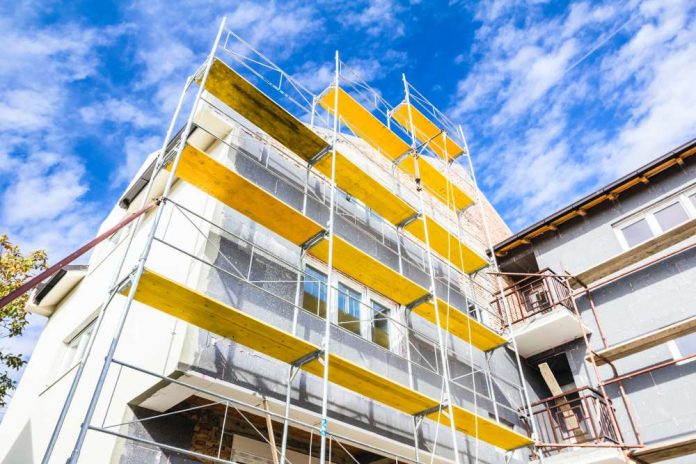When deciding to build a house, we think first of all about its interior. We plan the layout of rooms and their finishing. We want the interior to look beautiful and, at the same time to be comfortable to use. A similar approach is required to finish the building from the outside. The choice of the best rendering material decides to a large extent whether it will be attractive and durable. Should you go thick or thin?
How thick can you make render? What does a thick coat house render do?
Traditional exterior renders are also called “thick-coat” renders – after installation, they are 2-3 cm thick. They are relatively inexpensive and are designed for finishing all concrete and brick walls. Such thick-coat options we can divide into two main groups – cement and cement-lime render.
Cement render is more watertight than cement-lime rendering materials and resistant to mechanical damage, but it is more difficult to apply. Cement render binds and hardens quickly – if not used properly, it can crack in some places.
The best types of rendering? Thin coat render comparison
Thin layer renders are characterized by richer colors and a greater variety of textures than traditional plasters. They are also easier to execute – we can apply them in a layer 2-10 mm thick. Their advantage is also versatility – we can use them to finish two-layer walls and the walls previously plastered with traditional thick layer plaster. However, you need to pay more for such renders. On the market, you can find mineral, acrylic and silicone thin layer renders mineral.
Mineral render – popular thin coat render
Mineral renders are very durable and weather-resistant types of rendering. They contain cement and polymers that improve adhesion. They are also characterized by good vapor permeability. They are available in quite a limited number of colors – usually in delicate pastel shades. That is why we can also paint them with vapor permeable paint. Mineral renders, unfortunately, absorb strain water and therefore can get dirty quickly.
Acrylic render – durable exterior finish
Acrylic renders are the most flexible of the thin layer plasters (and therefore the least prone to cracking) and easy to install (also at low temperature). They are available in many colors and can have solid and saturated colors that do not fade. Their advantage is also the variety of structures and relatively low water absorption and vapor permeability. That’s why they are perfect for walls insulated with styrofoam. It is worth choosing acrylic render with biocidal agents – fungi and mold will not appear on them.
Silicone render – option for demanding customers
Silicone renders are a quality type of exterior rendering. They combine the advantages of mineral, silicate, and acrylic render.
That means they are low water absorption and hydrophobic, so water does not soak into the render surface but flows down it. However, it does not reduce its excellent vapor permeability. Silicone renders are also distinguished by resistance to dirt absorption and elasticity, making them suitable for installation even in low temperatures. They keep their intensive color for many years. Silicone render manchester is available with biologically active substances, which makes it resistant to fungi and algae. These numerous advantages make them suitable for both wool and styrofoam.

